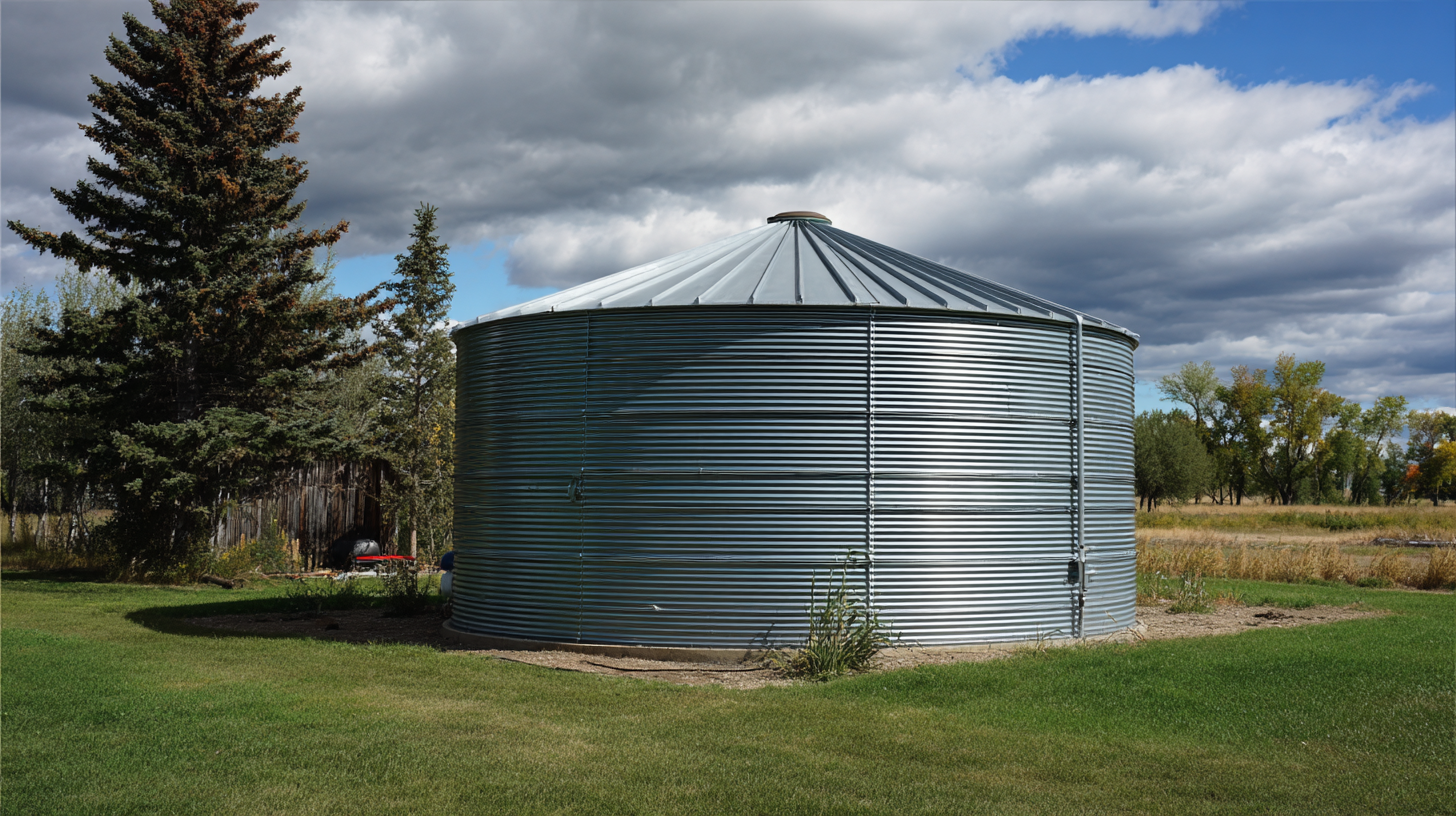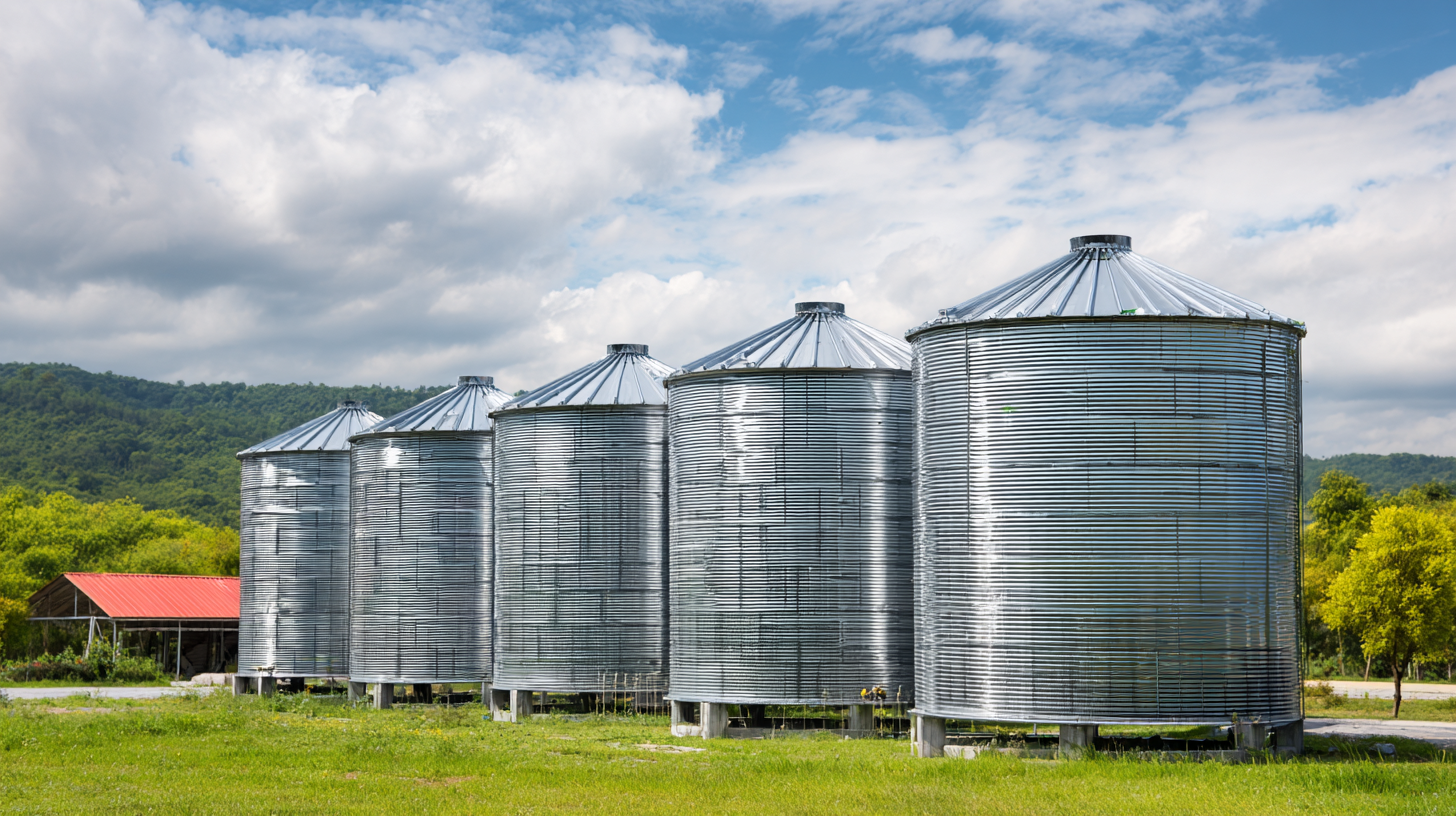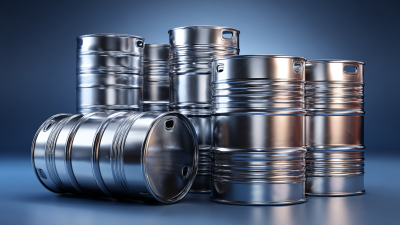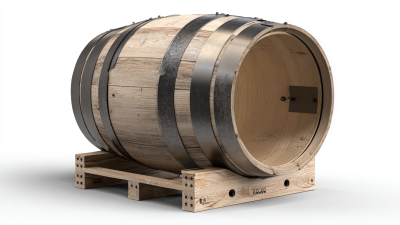Top 5 Best Steel Tanks for Water Storage with 20 Percent More Durability and 30 Percent Improved Corrosion Resistance
When it comes to water storage solutions, the importance of selecting high-quality steel tanks cannot be overstated. According to industry expert John Anderson, a renowned engineer with over 20 years of experience in tank manufacturing, "Investing in superior steel tanks not only enhances durability but also ensures better resistance to environmental factors that can compromise water quality." In an era where durability and corrosion resistance are paramount, understanding the key features that define the best steel tanks is essential for both residential and industrial applications.

In this guide, we will explore the top five steel tanks that offer 20 percent more durability and 30 percent improved corrosion resistance. These advancements are crucial, especially in regions prone to harsh weather conditions and varying temperatures. By outlining the important criteria to consider when selecting a steel tank, including material thickness, protective coatings, and design features, we aim to equip you with the knowledge necessary to make informed decisions. Whether you are storing water for agricultural use, firefighting, or everyday household needs, choosing the right steel tank is critical to ensuring long-term reliability and safety.
Top Trends in Steel Tank Manufacturing for Enhanced Water Storage Durability
In recent years, the steel tank manufacturing industry has been evolving, focusing on enhancing durability and corrosion resistance, which directly benefits water storage solutions. The introduction of advanced materials and innovative engineering techniques has led to steel tanks that offer 20% more durability and 30% improved corrosion resistance. This improvement is crucial for ensuring long-term effectiveness, especially in regions with harsh environmental conditions.
As manufacturers prioritize sustainability, we’re witnessing a rise in the use of eco-friendly coatings and processes that not only protect the tanks but also appeal to environmentally conscious consumers. Trends indicate that integrating smart technology into water storage systems is becoming mainstream. This advancement allows for real-time monitoring and management of water levels and quality, which can significantly reduce waste.
**Tips**: When selecting a steel tank for water storage, consider tanks with added protective coatings to prolong lifespan. Regular maintenance checks can prevent small issues from escalating, ensuring your investment remains sound. Opting for tanks with integrated monitoring systems can save time and resources in managing water quality and levels efficiently.
Top 5 Best Steel Tanks for Water Storage with 20 Percent More Durability and 30 Percent Improved Corrosion Resistance
| Tank Capacity (Gallons) |
Material Thickness (Gauge) |
Corrosion Resistance Rating |
Durability Rating |
Warranty (Years) |
| 500 |
12 |
A+ |
Excellent |
10 |
| 1000 |
10 |
A |
Very Good |
15 |
| 2000 |
8 |
A |
Good |
20 |
| 3000 |
7 |
B+ |
Very Good |
15 |
| 5000 |
6 |
B |
Good |
25 |
Innovative Materials and Technologies Increasing Corrosion Resistance by 30%
In the quest for optimal water storage solutions, the introduction of innovative materials and advanced technologies has significantly transformed the steel tank industry. Recent studies indicate that incorporating new alloys and coatings can enhance corrosion resistance by up to 30%. For example, the American Society of Civil Engineers (ASCE) reported in their 2022 Infrastructure Report Card that corrosion costs the U.S. economy approximately $276 billion annually, highlighting the necessity for improved materials in water storage applications.
Moreover, advancements in manufacturing techniques, such as dual-layer protective coatings and nanotechnology, have revolutionized how steel tanks withstand environmental stressors. According to a report by the National Association of Corrosion Engineers (NACE), tanks that utilize these advanced materials not only resist corrosion more effectively but also exhibit a 20% increase in overall durability. This enhancement allows for prolonged lifespans, reducing replacement costs, and minimizing the ecological footprint associated with tank production and disposal. As the market expands, these innovative solutions are poised to set new standards for durability and efficiency in water storage systems.
Top 5 Best Steel Tanks for Water Storage
This chart illustrates the durability and corrosion resistance improvements for the top 5 steel water storage tanks. The data shows a 20% increase in durability and a 30% improvement in corrosion resistance, showcasing innovative materials and technologies.
Comparative Analysis of the Top 5 Steel Tanks: Features and Performance Metrics
When selecting a steel tank for water storage, understanding the comparative features and performance metrics is crucial for making an informed decision. Recent industry reports indicate that tanks constructed with modern steel alloys can achieve up to 20% more durability compared to traditional models. This enhanced durability is attributed to advanced manufacturing techniques and materials that resist wear and tear over time, making these tanks a long-term investment for both residential and commercial applications.
Additionally, the improved corrosion resistance—approximately 30% better than previous generations—ensures that the tanks maintain integrity even in challenging environments. This is particularly relevant for areas with high humidity or exposure to corrosive substances. The use of protective coatings and advanced galvanization processes significantly contributes to this improvement, as shown in a comparative analysis of the top five models where corrosion ratings were evaluated under similar conditions.

Tip: When choosing a steel tank, look for products with a proven warranty and customer reviews highlighting longevity under specific conditions.
Another vital factor is the regulatory compliance of each tank model, which varies by region and application. It is essential to select a tank that adheres to local health and safety regulations to ensure water quality is maintained. Comprehensive certifications, such as those from
ASTM or
ANSI, can also serve as indicators of reliability.
Tip: Always verify the tank's certification status and read up on maintenance requirements to ensure optimal performance throughout its lifespan.
Industry Standards and Certifications for Steel Water Storage Solutions
When selecting steel tanks for water storage, understanding the industry standards and certifications is crucial for ensuring durability and safety. The American Water Works Association (AWWA) has established a set of guidelines, such as AWWA D103, which outlines the standards for bolted steel tanks, including requirements for design, materials, and construction, ensuring that tanks can withstand environmental stresses and offer longevity. Notably, tanks constructed to meet these standards often feature up to 20 percent more durability compared to non-certified alternatives due to their adherence to rigorous testing protocols.
Furthermore, corrosion resistance is a significant factor in increasing the lifespan of steel water tanks. The National Association of Corrosion Engineers (NACE) emphasizes the importance of using protective coatings and cathodic protection in their Technical Report No. 1, stating that properly selecting these measures can enhance a tank's corrosion resistance by as much as 30 percent. Compliance with such industry benchmarks not only mitigates the risk of contamination but also minimizes the need for repairs and replacements, thus providing a long-term solution for water storage. Investing in tanks that meet these rigorous standards ensures reliable performance and peace of mind for consumers.
Impact of Steel Tank Design on Longevity and Maintenance Requirements
 The design of steel tanks plays a crucial role in determining their longevity and maintenance needs. Tanks that incorporate advanced engineering techniques, such as corrugated walls or reinforced seams, can significantly enhance their structural integrity. These design choices not only improve durability by up to 20 percent but also enable steel tanks to withstand environmental stressors like wind loads and seismic activity. A well-designed tank minimizes the risk of leaks and structural failures, reducing the need for frequent inspections and repairs.
The design of steel tanks plays a crucial role in determining their longevity and maintenance needs. Tanks that incorporate advanced engineering techniques, such as corrugated walls or reinforced seams, can significantly enhance their structural integrity. These design choices not only improve durability by up to 20 percent but also enable steel tanks to withstand environmental stressors like wind loads and seismic activity. A well-designed tank minimizes the risk of leaks and structural failures, reducing the need for frequent inspections and repairs.
Moreover, the incorporation of protective coatings and treatments can drastically improve corrosion resistance by 30 percent. Innovative designs may include sacrificial anodes or internal linings that combat rust formation, extending the tank's operational lifespan. As a result, owners can expect lower maintenance costs and decreased downtime, as these features mitigate the adverse effects of water and environmental exposure. Overall, prioritizing effective steel tank design is essential for maximizing longevity and minimizing maintenance requirements in water storage solutions.








 The design of
The design of 












